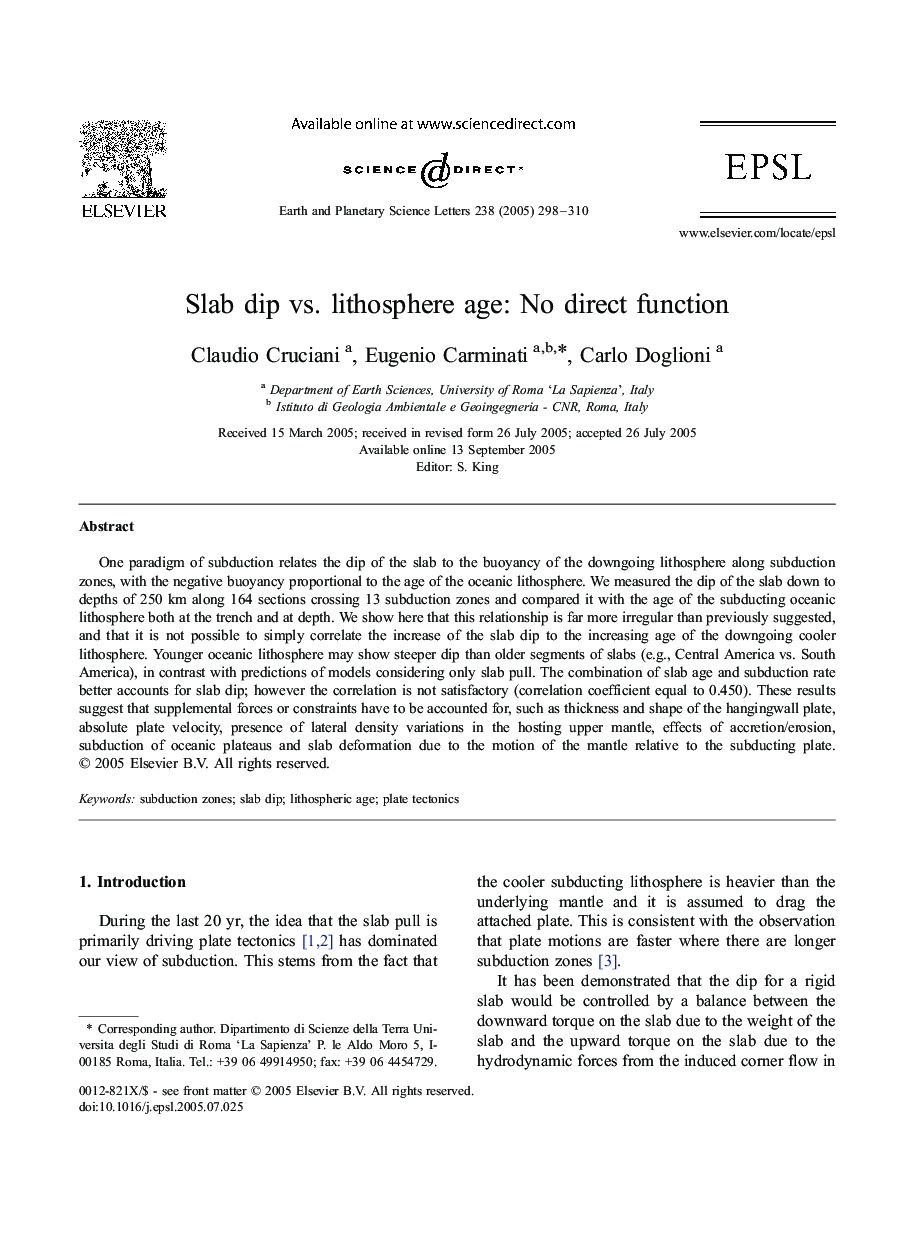| Article ID | Journal | Published Year | Pages | File Type |
|---|---|---|---|---|
| 9522598 | Earth and Planetary Science Letters | 2005 | 13 Pages |
Abstract
One paradigm of subduction relates the dip of the slab to the buoyancy of the downgoing lithosphere along subduction zones, with the negative buoyancy proportional to the age of the oceanic lithosphere. We measured the dip of the slab down to depths of 250 km along 164 sections crossing 13 subduction zones and compared it with the age of the subducting oceanic lithosphere both at the trench and at depth. We show here that this relationship is far more irregular than previously suggested, and that it is not possible to simply correlate the increase of the slab dip to the increasing age of the downgoing cooler lithosphere. Younger oceanic lithosphere may show steeper dip than older segments of slabs (e.g., Central America vs. South America), in contrast with predictions of models considering only slab pull. The combination of slab age and subduction rate better accounts for slab dip; however the correlation is not satisfactory (correlation coefficient equal to 0.450). These results suggest that supplemental forces or constraints have to be accounted for, such as thickness and shape of the hangingwall plate, absolute plate velocity, presence of lateral density variations in the hosting upper mantle, effects of accretion/erosion, subduction of oceanic plateaus and slab deformation due to the motion of the mantle relative to the subducting plate.
Related Topics
Physical Sciences and Engineering
Earth and Planetary Sciences
Earth and Planetary Sciences (General)
Authors
Claudio Cruciani, Eugenio Carminati, Carlo Doglioni,
